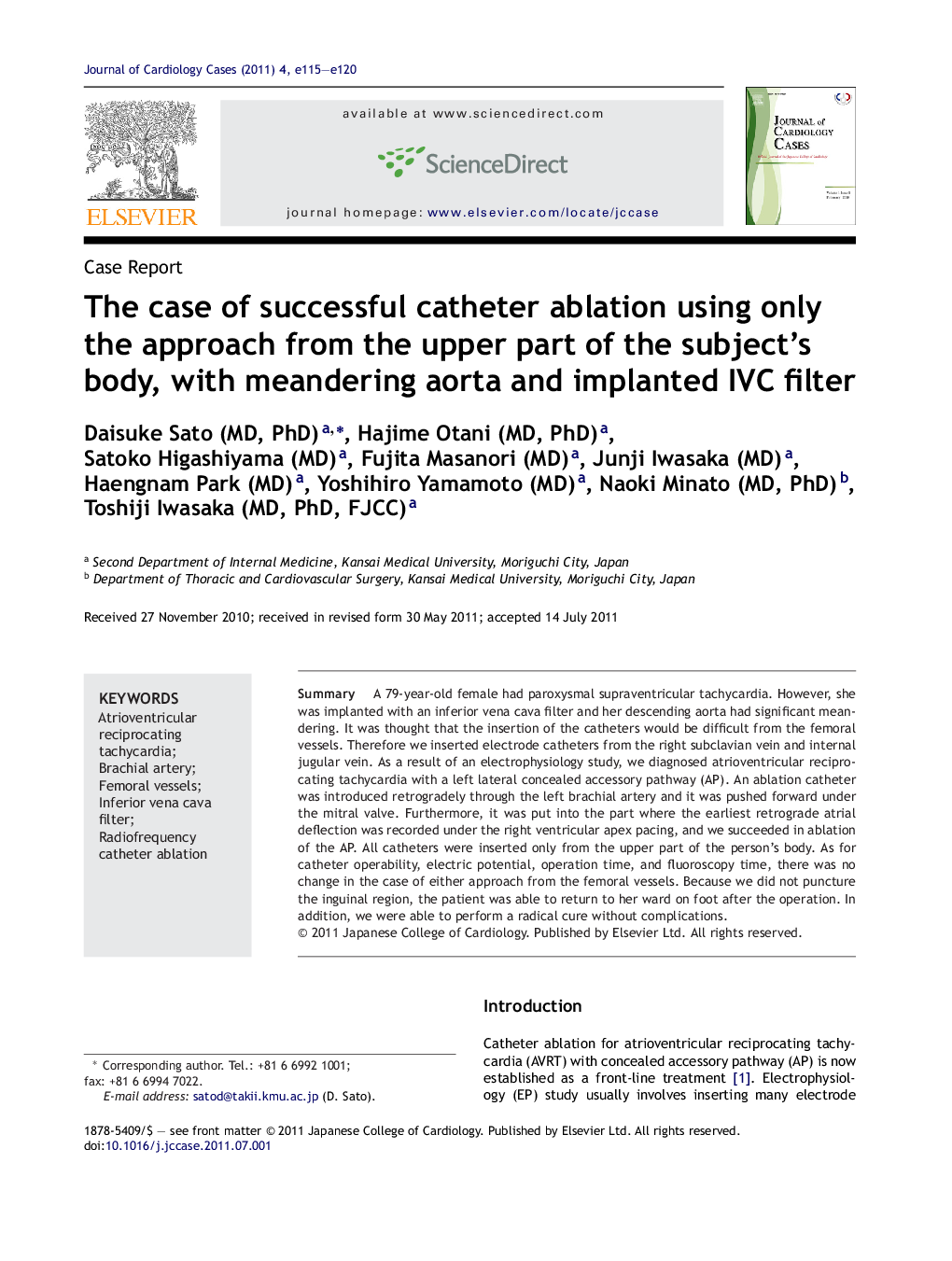| Article ID | Journal | Published Year | Pages | File Type |
|---|---|---|---|---|
| 2964037 | Journal of Cardiology Cases | 2011 | 6 Pages |
SummaryA 79-year-old female had paroxysmal supraventricular tachycardia. However, she was implanted with an inferior vena cava filter and her descending aorta had significant meandering. It was thought that the insertion of the catheters would be difficult from the femoral vessels. Therefore we inserted electrode catheters from the right subclavian vein and internal jugular vein. As a result of an electrophysiology study, we diagnosed atrioventricular reciprocating tachycardia with a left lateral concealed accessory pathway (AP). An ablation catheter was introduced retrogradely through the left brachial artery and it was pushed forward under the mitral valve. Furthermore, it was put into the part where the earliest retrograde atrial deflection was recorded under the right ventricular apex pacing, and we succeeded in ablation of the AP. All catheters were inserted only from the upper part of the person's body. As for catheter operability, electric potential, operation time, and fluoroscopy time, there was no change in the case of either approach from the femoral vessels. Because we did not puncture the inguinal region, the patient was able to return to her ward on foot after the operation. In addition, we were able to perform a radical cure without complications.
